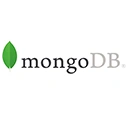Introduction to MongoDB
MongoDB is a popular NoSQL database known for its flexibility and scalability. In this guide, we'll explore some advanced tips and techniques to help you make the most of MongoDB.
Connecting to MongoDB
To get started, you'll need to connect to your MongoDB server. Here's a sample code snippet in Node.js using the
mongodbconst MongoClient = require('mongodb').MongoClient;
const url = 'mongodb://localhost:27017'; // Replace with your MongoDB server URL
const dbName = 'mydb'; // Replace with your database name
MongoClient.connect(url, { useNewUrlParser: true }, (err, client) => {
if (err) throw err;
const db = client.db(dbName);
console.log('Connected to MongoDB');
// Your code here
client.close();
});
Advanced Querying
MongoDB offers powerful querying capabilities. Here's an example of an aggregation pipeline to find the average age of users in a collection:
db.users.aggregate([
{ $group: { _id: null, avgAge: { $avg: '$age' } } }
]);
Indexing for Performance
Indexing is crucial for optimizing MongoDB queries. Consider creating an index on frequently queried fields:
db.users.createIndex({ email: 1 });
Data Modeling Best Practices
Proper data modeling is essential. For example, when dealing with time-series data, use the bucket pattern:
{
_id: ObjectId(),
timestamp: ISODate(`2023-10-18T12:00:00Z`),
value: 42
}
Conclusion
MongoDB is a versatile database system, and mastering advanced tips and techniques can greatly improve your application's performance and efficiency. We've only scratched the surface here; keep exploring and experimenting to make the most of MongoDB!

